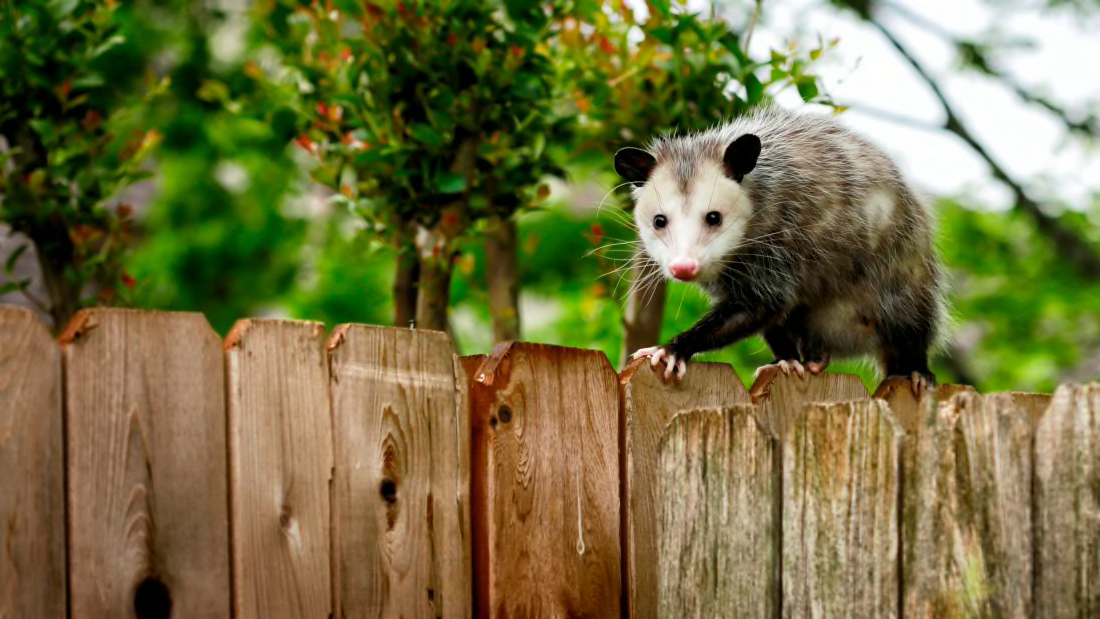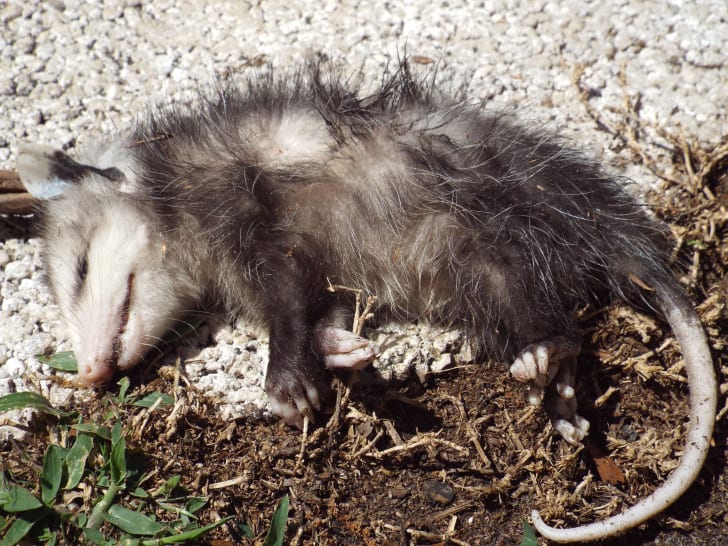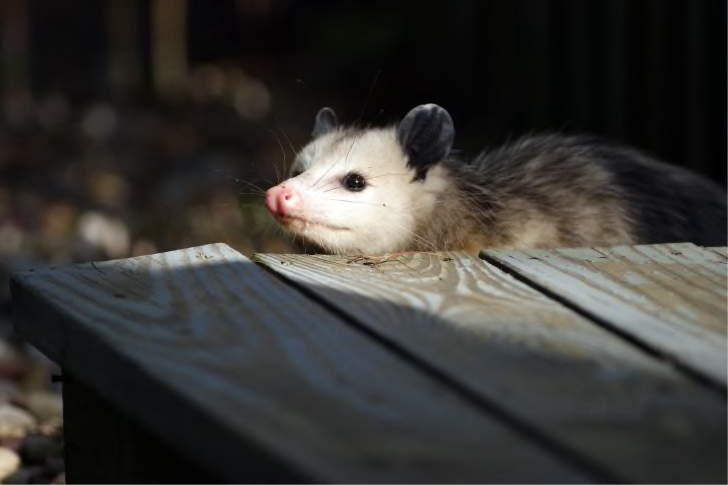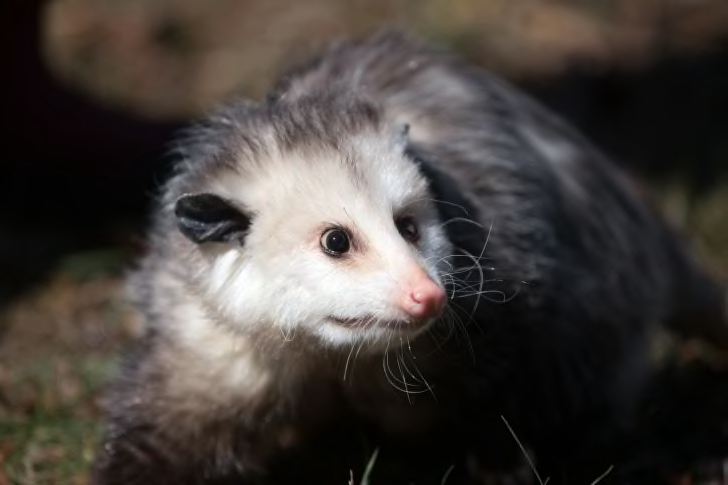OPossums

13 Facts About Opossums
Opossums, which include the roughly 100 species in the order Didelphimorphia, are some of the most misunderstood animals in the Americas. They’re often thought of as dimwitted, dirty creatures whose most impressive trick is acting like roadkill. The truth is just the opposite: Opossums are smarter, cleaner, and more beneficial to humans than many of their woodland neighbors. Read on for more opossum facts.
1. OPOSSUMS AND POSSUMS AREN’T THE SAME ANIMAL.
In North America, opossum and possum describe the same thing, but in Australia the word possum refers to a completely different animal. Among the most well known of their respective types are the Virginia opossum and the brushtail possum. Both are small to medium sized, omnivorous marsupials, but the similarities end there. The possum looks like a cute cross between a squirrel and a chinchilla and it belongs to a different order than the North American mammal that shares (most of) its name. Despite the potential for confusion, possum is accepted as the shortened version of opossum in this part of the world (and if you see the word possum in this list, you can assume it’s referring to the animal from the Americas).
2. THEY’RE THE ONLY MARSUPIALS FOUND NORTH OF MEXICO.

4. AN OFFENSIVE ODOR SELLS THE PERFORMANCE.
A picture of a possum playing dead doesn’t really do it justice. To get the full experience, you need to be standing over to it to smell the putrid odor it emits when pretending to be a corpse. The smelly substance it secretes from its anus is just one more reason for foxes and bobcats to look for their dinner elsewhere.
5. THEY SLOW THE SPREAD OF LYME DISEASE.
Even if possums aren’t the cutest creatures in the forest, they should be a welcome addition to your backyard. Unlike other mammals that carry ticks, and therefore spread Lyme Disease, possums gobble up 90 percent of the ticks that attach to them. According to the National Wildlife Federation, a single possum consumes 5000 of the parasites per tick season. That means the more possums that are in your area, the fewer ticks you’ll encounter.
6. THEIR MEMORIES ARE SURPRISINGLY SHARP.

7. THEY’RE IMMUNE TO MOST SNAKE VENOM.
While most animals look at a snake and see danger, a possum sees its next meal. The animals are immune to the venom of nearly every type of snake found in their native range, the one exception being the coral snake. Possums take advantage of this adaptation by chowing down on snakes on a regular basis.
Researchers have been trying to harvest possums’ antivenom powers for decades. A few years ago, a team of scientists made progress on this front when they recreated a peptide found in possums and and found that mice given the peptide and rattlesnake venom were successfully protected from the venom’s harmful effects.
8. THEY ALMOST NEVER GET RABIES.
While possums aren’t totally immune to rabies (a few cases have been documented), finding a specimen with the disease is extremely unlikely. Marsupials like possums have a lower body temperature than the placental mammals that dominate North America—in other words, their bodies don’t provide a suitable environment for the virus.
9. THEIR TAIL ACTS AS A FIFTH APPENDAGE.

10. THEY’RE CONSTANTLY SELF-GROOMING.
Thanks to their whole acting-and-smelling-like-a-corpse routine, opossums aren’t known as the most sanitary animals in nature. But they take cleanliness seriously: The Washington Department of Fish and Wildlife writes that possums, like housecats, use their tongue and paws to groom themselves frequently and thoroughly. Possums largely lack sweat glands, and this behavior is believed to help them cool down. It also has the added effect of rendering them odorless (when they’re not secreting stinky predator-repellant, that is).
11. THEIR EYES AREN’T TOTALLY BLACK.

12. THEY’RE SOCIAL CREATURES.
It was long assumed that opossums like to keep to themselves, but a study published in the journal Biology Letters suggests they have a social side. Researchers at the Federal University of Pernambuco in Recife, Brazil observed some possums in captivity sharing dens even if they weren’t mates. In one case, 13 white-eared opossums of various age groups were cohabiting the same space. The scientists suspect that male and female possums living in the wild may even build nests together as a way to trigger the female’s reproductive hormones.
13. THEIR REPRODUCTIVE SYSTEMS ARE COMPLICATED.
The way it gives birth and raises its young isn’t the only thing that’s interesting about the opossum's reproductive life. Females have two vaginal tracts and two uteri, and males in turn have a forked or bifurcated penis. This is fairly typical for marsupials, but when European colonizers first landed in North America centuries ago, they didn’t know what to make of the confusing genitalia. One explanation they came up with was that male opossums impregnated females through the nose.
Comments
Post a Comment